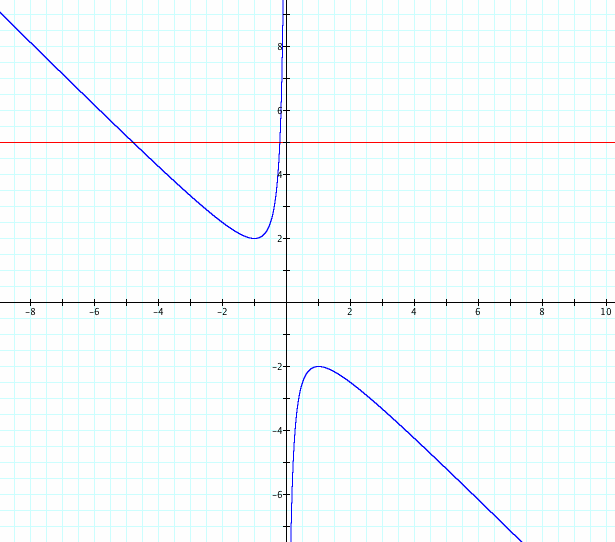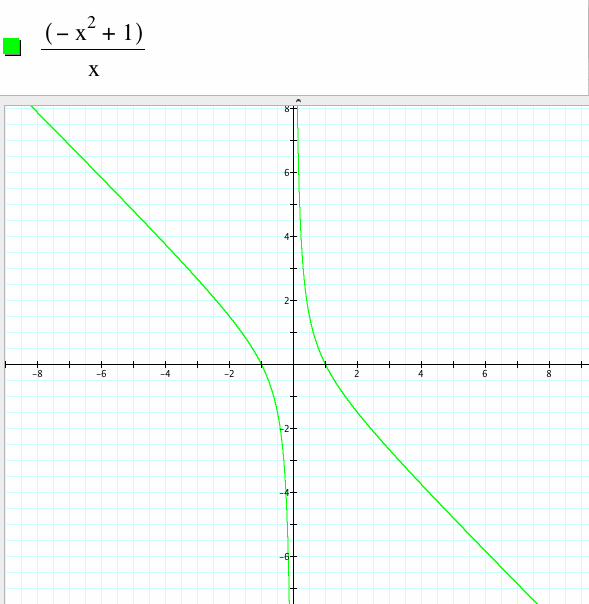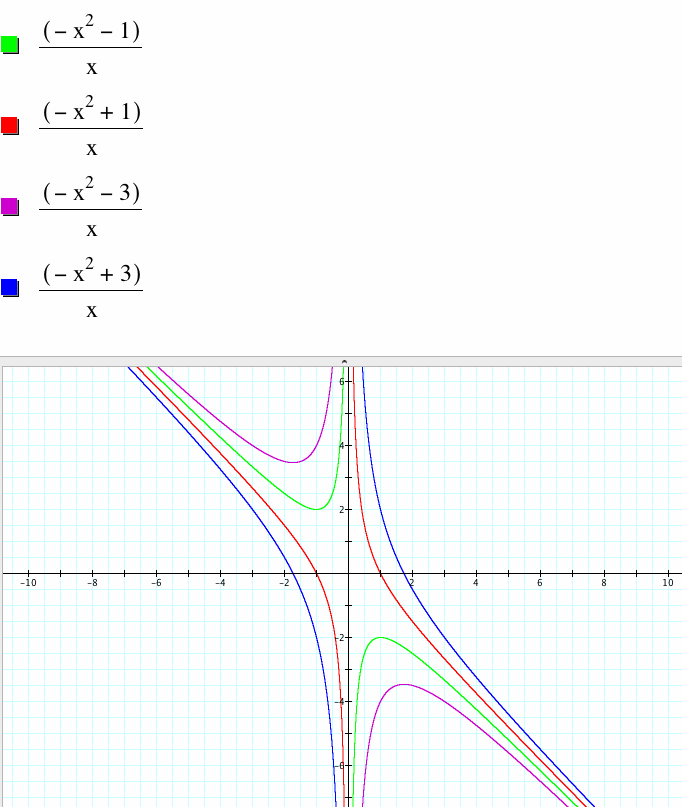
Graphs in the xb plane:
By: Alicia Rosenberger
Consider again the equation x2+ bx+ 1= 0.
Now graph this relation in the xb plane. We get the following graph:

If we take any particular value of b, say b = 5, and overlay this equation on the graph we add a line parallel to the x-axis. If it intersects the curve in the xb plane the intersection points correspond to the roots of the original equation for that value of b. We have the following graph.

All of the curves in the xb plane are hyperbolas and all have the asymptotes x=0 and x= -y. For each value of b we select, we get a horizontal line. It is clear on a single graph that we get two negative real roots of the original equation when b > 2, one negative real root when b = 2, no real roots for -2 < b < 2, One positive real root when b = -2, and two positive real roots when b < -2.
Consider the case when c = - 1 rather than + 1.
When c=-1, we get the following graph:

Graph other values of c on the same axes. We see what the graph looks like when c=1 (green graph), when c=-1 (red graph), when c=3 (pink graph), and when c=-3 (dark blue graph)):

So, we see that when c=-1 (red graph):
The graph turns
It is clear on a single graph that we get one negative real root and one positive real root of the original equation when x <-1, one positive real root when x = -1, no real roots for -1 <x< 1, One positive real root when x = 1, and one positive real root and one negative real root when x>1.
when c=3 (pink graph):
It is clear on a single graph that we get two negative real roots of the original equation when b > 4, one negative real root when b = 4, no real roots for -4 < b < 4, One positive real root when b = -4, and two positive real roots when b < -4.
when c=-3 (blue graph):
The graph turns
It is clear on a single graph that we get one negative real root and one positive real root of the original equation when x <-2, one positive real root when x = -2, no real roots for -2 <x< 2, One positive real root when x = 2, and one positive real root and one negative real root when x>2.